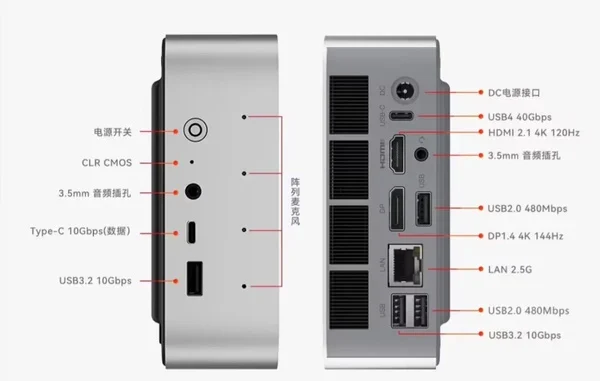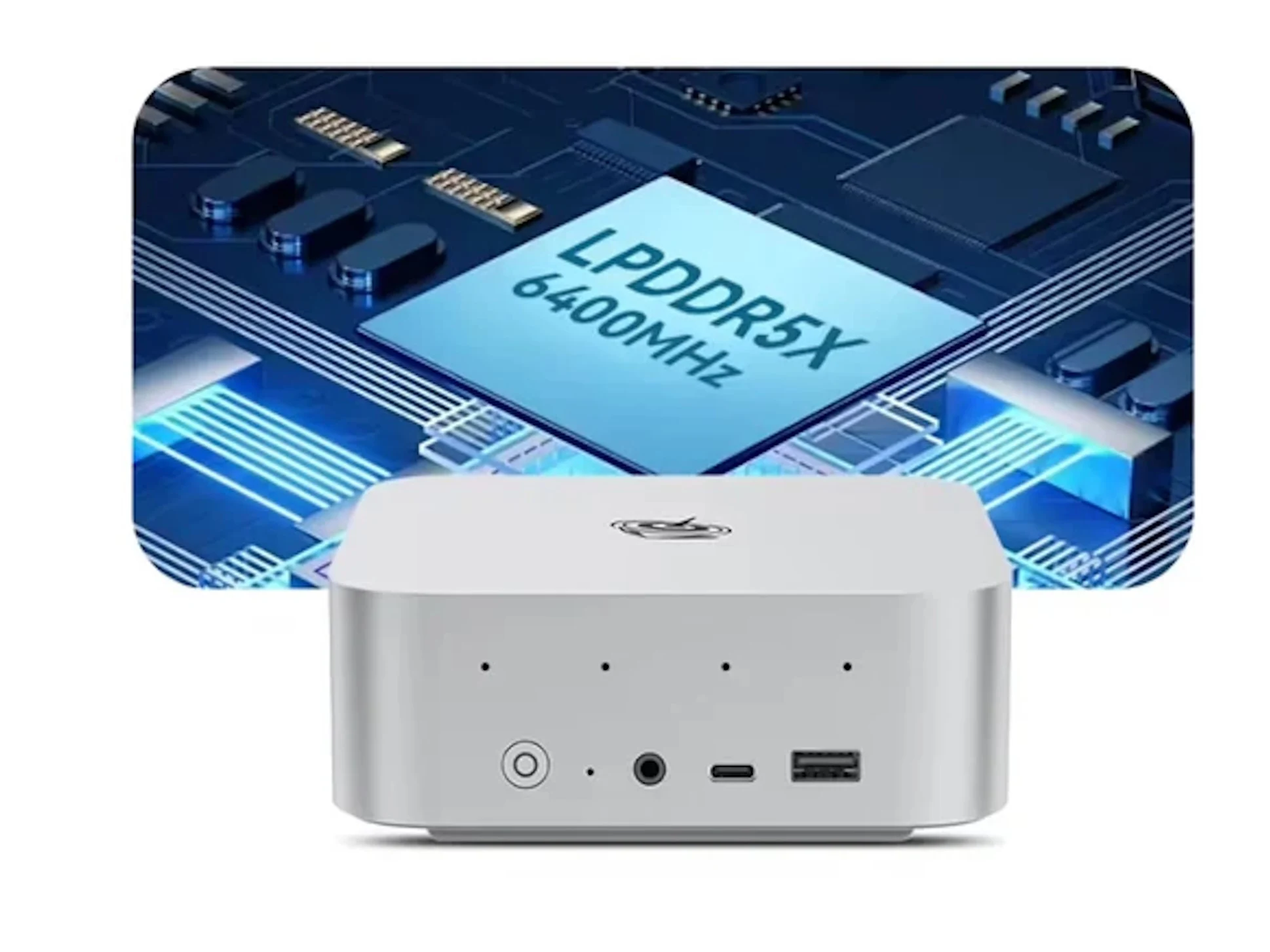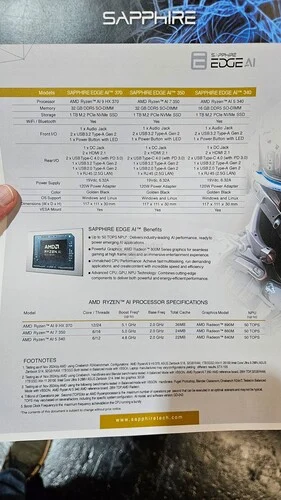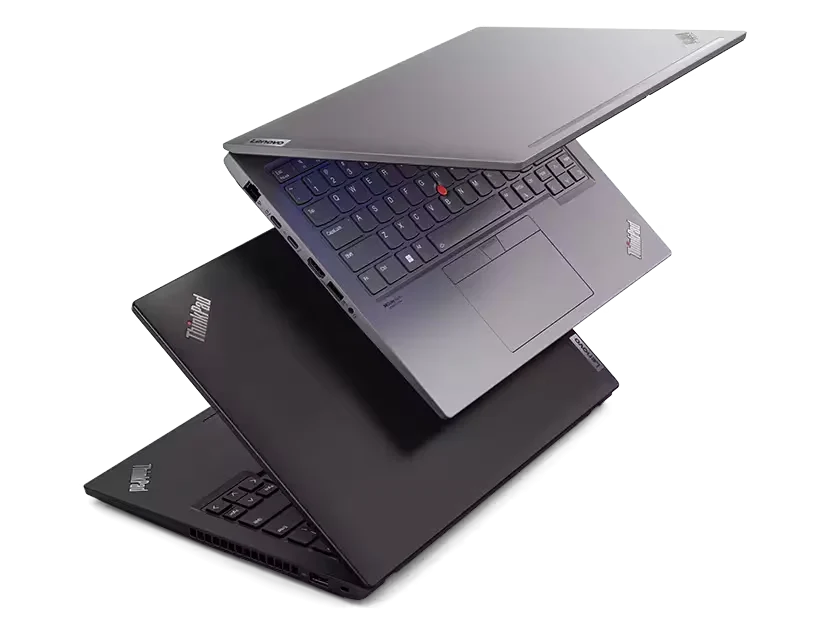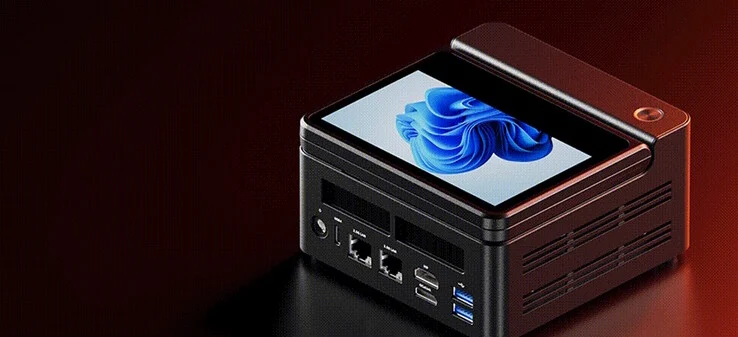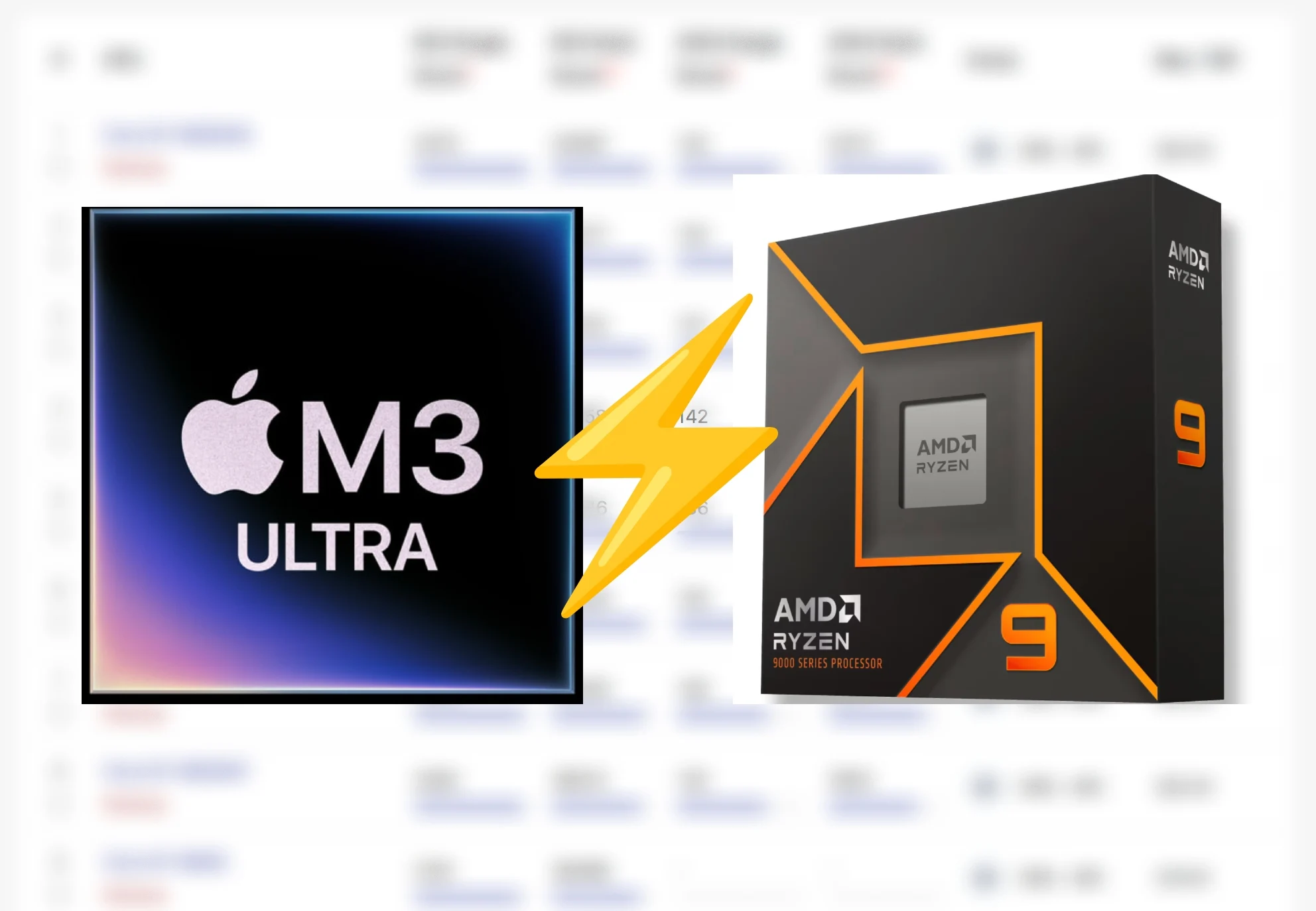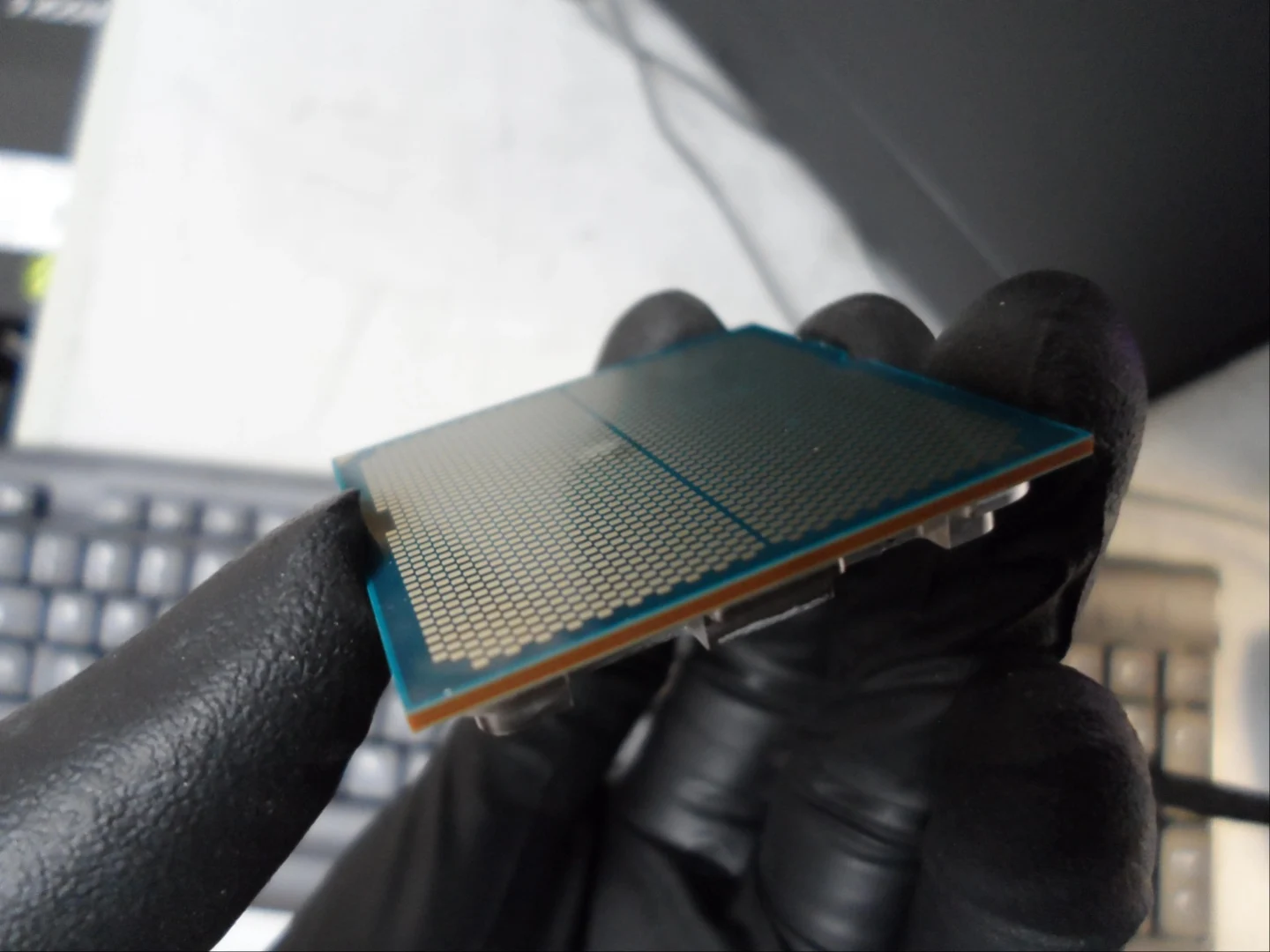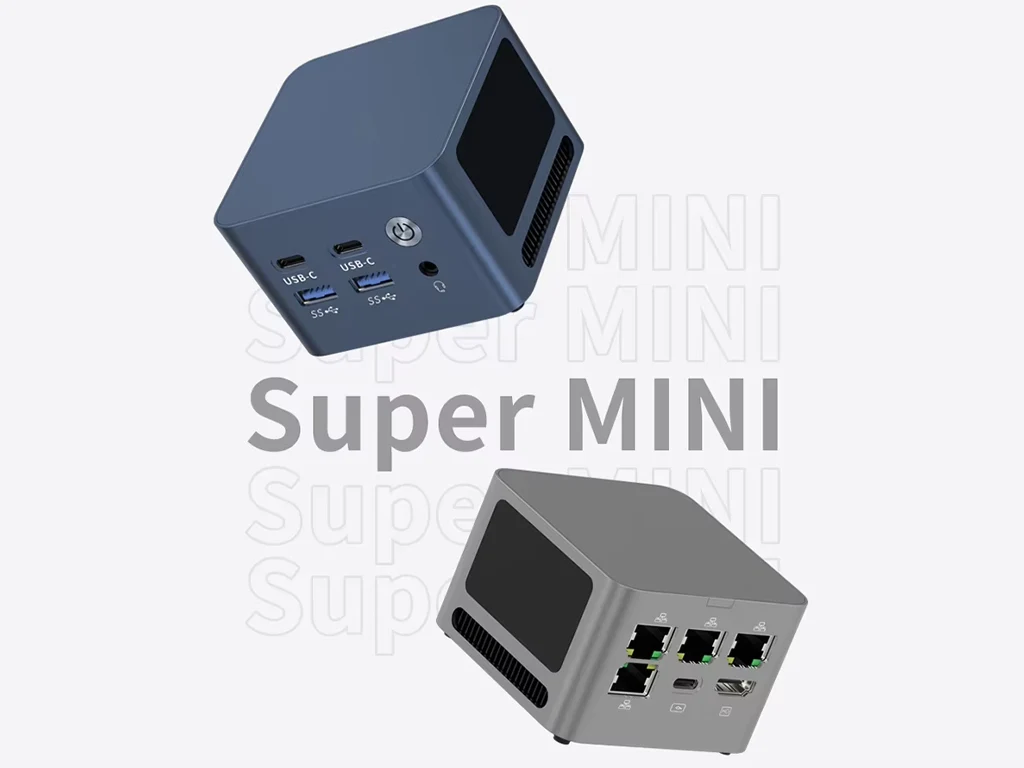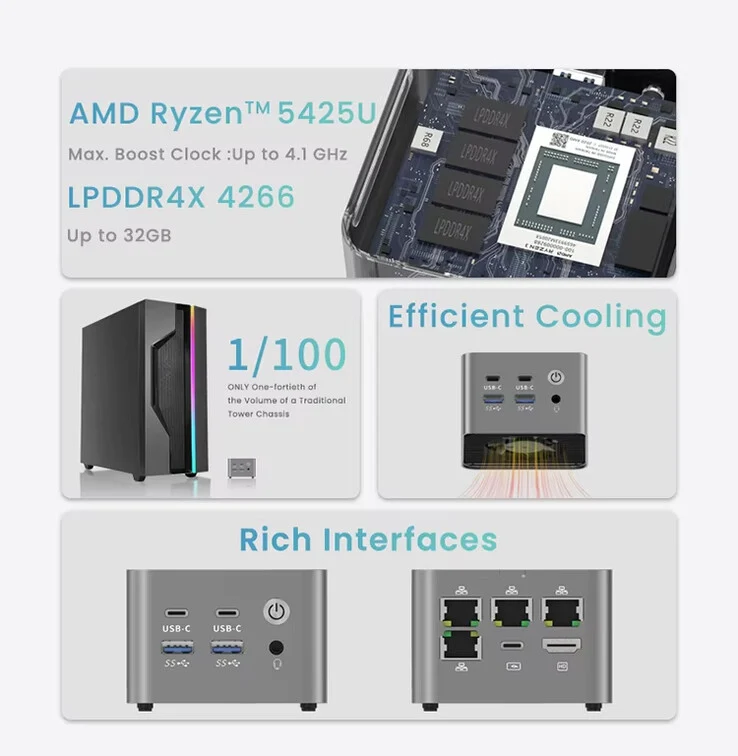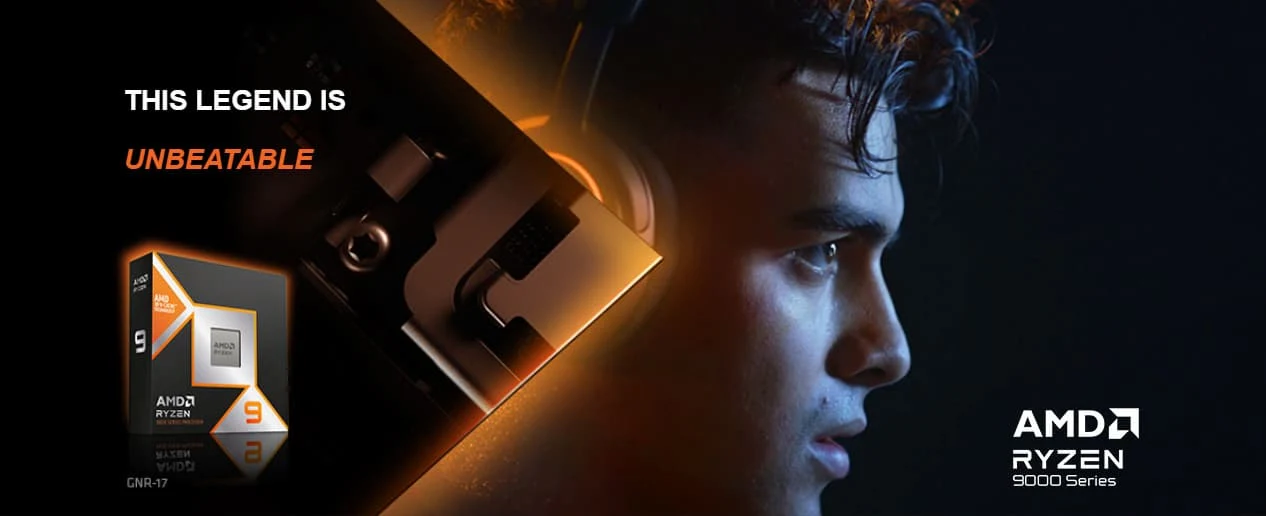Key Takeaways
1. The Beelink SER8 Pro features an AMD Ryzen 7 8845HS chipset and an AMD Radeon 780M iGPU.
2. It is equipped with 32GB of LPDDR5 RAM running at 6,400MHz and supports two SSDs via PCIe 4 lanes.
3. The mini PC includes a strong cooling system to prevent thermal throttling and offers connectivity options like a 2.5Gbps Ethernet port, HDMI 2.1, and DisplayPort 1.4 for 4K displays.
4. Expandability is supported through an external GPU via USB 4, along with multiple USB ports and integrated speakers and microphone.
5. Beelink has not yet announced the official release date or price for the SER8 Pro, while the standard SER8 model is available for purchase.
The SER8 Pro is a recently launched mini PC by Beelink, a recognized Chinese brand in the expanding market of compact computers. The “Pro” in its title suggests that this system is equipped with an impressive chipset, specifically the AMD Ryzen 7 8845HS. Alongside this chipset, it features an AMD Radeon 780M iGPU, but it’s important to note that OCuLink support is absent. Additionally, the PC is outfitted with 32GB of LPDDR5 RAM that runs at a speed of 6,400MHz.
Storage and Connectivity
This mini PC is capable of holding two SSDs, with each being able to connect through four PCIe 4 lanes. Beelink also promotes a strong cooling system designed to avert thermal throttling. For connectivity, it offers an Ethernet port capable of 2.5Gbps, as well as HDMI 2.1 and DisplayPort 1.4. These two outputs can connect to high-resolution 4K displays or TVs, supporting high refresh rates like 120Hz.
Expandability Features
Moreover, the SER8 Pro allows for expansion with an external GPU via USB 4, although there may be some bandwidth limitations compared to OCuLink. It also includes USB Type-C and USB 3.2 Type-A ports, offering 10Gbps speeds, along with a 3.5mm headphone jack. The mini PC is equipped with two integrated speakers and a microphone, which can be handy for using digital voice assistants. However, Beelink has yet to announce an official release date or price, while the standard SER8 (without the Pro designation) is already on sale at various prominent US retailers, including Amazon.
Source:
Link
